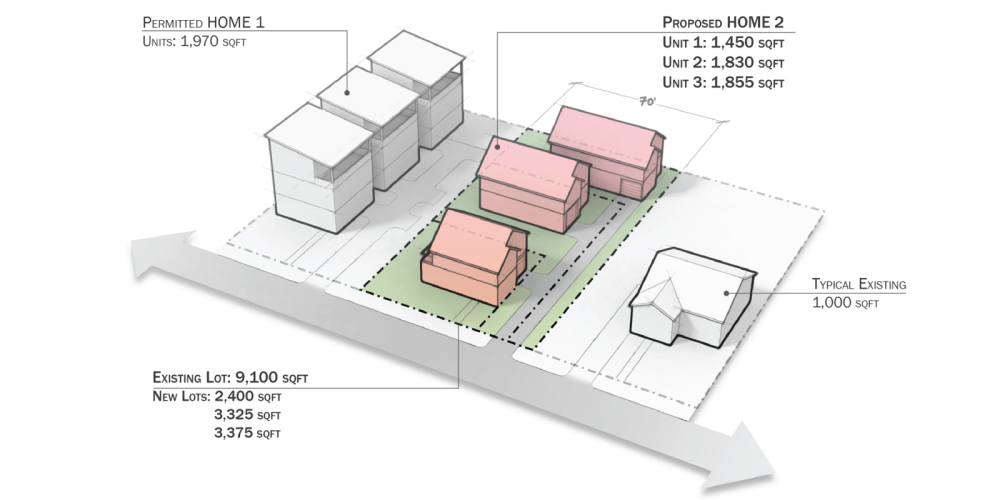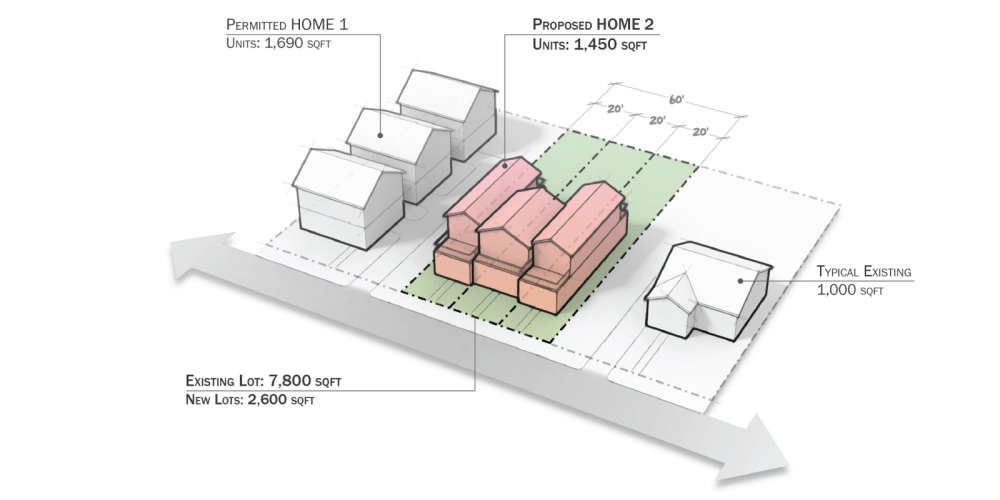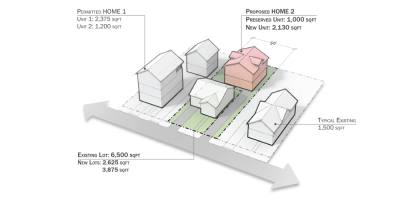"To address Austin's affordability crisis, we need more housing options, period," Mayor Kirk Watson said in a social media post after the vote. "And the critical land-use changes adopted by the Austin City Council today are aimed at improving affordability in Austin by breaking down the obstacles that have made it hard to create housing."
The big picture
HOME, or Home Options for Middle-income Empowerment, was first proposed last spring by council member Leslie Pool as a strategy to permit more housing types and smaller homes than have traditionally been allowed in Austin.
Phase 1 was approved in December and increased the number of residences that can be constructed on single-family properties. After hearing public feedback from hundreds of residents May 16, council voted to reduce the amount of land needed to build a single housing unit May 17. Phase 2 passed with a 9-2 vote, with council members Mackenzie Kelly and Alison Alter voting against the new changes.
"I think the timeline has been unnecessarily rushed, leading to a product that isn't fully vetted, which may have dangerous yet predictable outcomes," Alter said just before the vote.
Both pieces of the program drew significant support and opposition in the community over the past several months; hundreds on both sides showed up to testify through a series of public hearings.

The new residential regulations are viewed by many as a way to make Austin more accessible and affordable by amending longstanding rules that encourage larger home construction, cutting development and land costs, bringing more supply to the housing market as Austin's population has boomed, and reducing urban sprawl. Several also said the changes would reverse some aspects of Austin's historic segregationist zoning. Some supporters pointed to other Texas cities with smaller lot sizes and lower average home prices than Austin as examples of the policy's possible result.
On the opposite side, scores of Austinites shared concerns about flooding, fire risks and changing neighborhood standards stemming from increased housing development. They also noted the potential for greater displacement in lower-income communities and places already experiencing gentrification, building on negative impacts of racist land-use decisions. Many stated a surge of market supply may actually increase land values and benefit homebuilders, rather than curbing housing costs and helping low- and middle-income residents.

More information on the changes is available from the city.
The details
HOME Phase 2 reduces Austin's minimum lot size from 5,750 square feet down to 1,800 square feet for a single housing unit, effective Aug. 15. Two- and three-unit residences will still fall under the 5,750-square-foot limit.
Council also adjusted other development standards, such as minimum lot widths, and adopted a temporary ban on short-term rentals in small single-family lots.
In response to fire-related concerns, council voted to delay the rollout of HOME Phase 2 in Austin's outer limits, which face a heightened risk for wildfires. The new practices will not be allowed on those properties, known as the wildfire-urban interface area, until Nov. 16.
Council directed city staff to produce regular reports on the outcomes of HOME, including an analysis of whether the new building allowances spur displacement in communities of color. Staff were also asked to consider an "equity overlay" to adjust the program's effects in certain geographic areas. The overlay would be aimed at maintaining affordability and limiting displacement in Austin's lower-income neighborhoods and areas hit with rapid gentrification.
Council member Natasha Harper-Madison said she had "high hopes" for the equity overlay but was "slightly skeptical" because past attempts to add a similar overlay were unsuccessful.
"To be clear, Blackness and Brownness is not synonymous with poverty. It's universal," Harper-Madison said. "And so I really don't like that we marginalize the conversation around marginalized humans. ... We have people all over this town who look like all sorts of things—we've got from all sorts of backgrounds who are deeply embedded in the kind of poverty that they won't come out of without the assistance of our community. So my hope is that we can be a little more inclusive when we have conversations about addressing poverty, about addressing accessible options for all homeowners and renters."

Also of note
In addition to HOME Phase 2, council adopted changes to promote more new residential development across the city during the May 17 meeting.
Austin's compatibility standards, or rules governing the height and other characteristics of buildings within a certain distance of existing homes, was cut by more than 86%. New construction over 75 feet from single-family housing will not be impacted by compatibility—the limits previously stretched up to 540 feet from homes.
City staff have reported compatibility has effectively blocked the creation of tens of thousands of new housing units.
"What the compatibility rules have done is pushed apartments to the [edges] and used them to kind of protect the interiors of the neighborhoods, which has the effect of the folks that are in the apartments, which are going to largely be poor, are the ones that are breathing the fumes, the ones that are dealing with the high traffic," council member Chito Vela said.
Council also cleared the way for new zoning plans to encourage more residential development along the proposed Project Connect light rail. Austin’s equitable transit-oriented development, or ETOD, goals were shaped over several years. The new ETOD zoning will go into place within a half-mile of Project Connect’s first phase.
The change will allow more residences and taller buildings, incentivize affordable housing and discourage the addition of spaces deemed not to be “transit-supportive,” such as auto shops and warehouses.
Council also voted to primarily add new electric vehicle charging stations to commercial and industrial areas off of heavily trafficked roads and certain major corridors closer to the city core, while limiting how much charging infrastructure is added to residential neighborhoods.
What they're saying
Kelly said she voted against HOME Phase 2 over concerns that boosting building density would reduce the city's "treasured green spaces," increase light pollution and make Austin a less desirable place to live.
"I think back to the wise words of Dr. Seuss, which so many of us did read as children, and now we read to our kids: 'I am the Lorax; I speak for the trees,'" Kelly said. "The Lorax ... reminds us that we must be vigilant stewards of our environment, protecting it from overdevelopment and neglect."
"This is a crucial step towards enhancing housing affordability and making homeownership more attainable to Austinites, especially teachers, first responders, young professionals and retirees," the Austin Board of Realtors said in a statement following the vote. "These reforms will help increase housing supply, allow for a greater variety of housing types across the city and ensure that people who work in Austin can live here."








